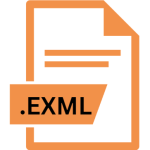.REL File Extension

Relocatable Module File
| Developer | Nintendo |
| Popularity | |
| Category | Game Files |
| Format | .REL |
| Cross Platform | Update Soon |
What is an REL file?
A .REL (Relocatable Module) file is a type of binary file format used in computer programming and software development. It contains compiled code and data that can be linked with other modules to create a larger executable program. Relocatable modules are particularly common in systems that use dynamic linking or shared libraries, allowing for efficient code reuse and modularity.
More Information.
Relocatable modules were initially developed to address the need for modular programming and code reuse in large software projects. By breaking programs down into smaller, reusable modules, developers could more easily manage complexity and make updates to specific parts of a program without having to recompile the entire codebase. This approach also facilitated the development of shared libraries and dynamic linking, which further improved code reuse and runtime efficiency.
Origin Of This File.
The concept of relocatable modules dates back to the early days of computing, with early examples appearing in operating systems like Unix and mainframe environments. As software development practices evolved, relocatable modules became a standard way to organize and distribute code in many programming languages and platforms.
File Structure Technical Specification.
The structure of a .REL file typically includes compiled code, data, and relocation information. Relocation information specifies how the addresses of symbols within the module should be adjusted when the module is linked with other modules or loaded into memory. This allows the module to be loaded at different memory addresses without requiring changes to the code itself.
How to Convert the File?
Windows:
- Open a command prompt or terminal window.
- Use a compiler like GCC (GNU Compiler Collection) or Microsoft Visual Studio to link the .REL file with other modules and produce an executable file.
- Use the appropriate linker command to specify the input .REL file and any other necessary modules or libraries.
- Compile and link the files using the appropriate compiler and linker options.
- Once the linking process is complete, you’ll have an executable file that includes the functionality of the original .REL file.
Linux:
- Open a terminal window.
- Use a compiler like GCC (GNU Compiler Collection) to link the .REL file with other modules and produce an executable file.
- Use the appropriate linker command to specify the input .REL file and any other necessary modules or libraries.
- Compile and link the files using the appropriate compiler and linker options.
- Once the linking process is complete, you’ll have an executable file that includes the functionality of the original .REL file.
Mac:
- Open a terminal window.
- Use a compiler like GCC (GNU Compiler Collection) to link the .REL file with other modules and produce an executable file.
- Use the appropriate linker command to specify the input .REL file and any other necessary modules or libraries.
- Compile and link the files using the appropriate compiler and linker options.
- Once the linking process is complete, you’ll have an executable file that includes the functionality of the original .REL file.
Android:
- For native code development on Android, use the Android NDK (Native Development Kit).
- Create a new Android NDK project or integrate native code into an existing project.
- Place the .REL file in the appropriate directory within your project.
- Modify your Android.mk or CMakeLists.txt build file to include the .REL file in the build process.
- Build your Android project using the appropriate build commands for your chosen build system (e.g., ndk-build or CMake).
- Once the build process is complete, the functionality of the .REL file will be available within your Android application through JNI (Java Native Interface) calls.
iOS:
- For native code development on iOS, use Xcode and the iOS NDK (Native Development Kit).
- Create a new iOS project or integrate native code into an existing project.
- Place the .REL file in the appropriate directory within your project.
- Modify your Xcode project settings to include the .REL file in the build process.
- Write Objective-C or Swift code to interface with the functionality provided by the .REL file.
- Build your iOS project using Xcode.
- Once the build process is complete, the functionality of the .REL file will be available within your iOS application through Objective-C or Swift code.
Advantages And Disadvantages.
Advantages:
- Facilitates modular programming and code reuse.
- Supports dynamic linking and shared libraries.
- Allows for efficient memory usage by loading modules at different memory addresses.
- Helps manage complexity in large software projects.
Disadvantages:
- Requires additional processing during linking and loading.
- May increase the size of executable files due to relocation information.
- Can introduce complexity in debugging and troubleshooting.
How to Open REL?
Open In Windows
- .REL files can be linked with other modules using development tools like Visual Studio or GCC (GNU Compiler Collection).
Open In Linux
- Use the GCC compiler or other compatible development tools to link .REL files with other modules.
Open In MAC
- Similar to Linux, you can use GCC or other development tools to link .REL files on a Mac.
Open In Android
- Android development typically involves Java or Kotlin programming languages, so .REL files may not be directly applicable. However, native code development using the Android NDK (Native Development Kit) may involve linking .REL files with JNI (Java Native Interface) libraries.
Open In IOS
- iOS development primarily uses Swift or Objective-C, so .REL files may not be directly used. However, similar to Android, you can integrate native code using the iOS NDK and link .REL files with Objective-C or Swift code.
Open in Others
- Other platforms may have their own development tools and processes for working with .REL files. Consult the documentation and resources specific to the platform you’re working with.













